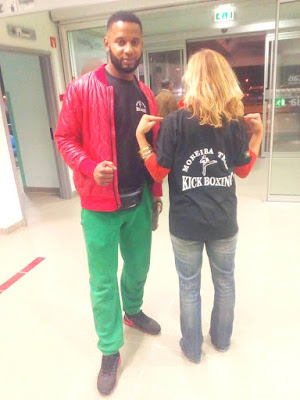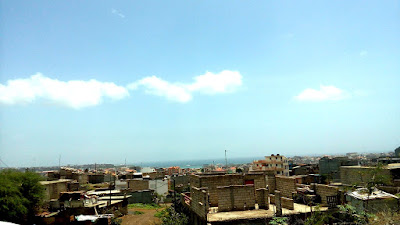Perú - Cusco/ Pachamama Raymi - Oct 2017
For a English version please scroll down
Antes de viajar para o Perú, eu sabia que havia duas coisas que não poderia deixar de visitar: Machu Picchu e Pachamama Raymi. Pois é da segunda que vos vou falar hoje.
Pachamama Raymi é uma associação civil, sem fins lucrativos, sedeada na cidade de Cusco, e que implementa projectos para a erradicação da pobreza. Esta organização tem por missão facilitar a prosperidade integral e sustentável de famílias do meio rural e o seu meio ambiente. Fá-lo descobrindo e fortalecendo o seu potencial e, simultaneamente, cooperando com os diferentes sectores da sociedade (empresas, governos e instituições locais).
Ouvi falar pela primeira vez nesta organização, ainda em agosto, através da Madalena, uma viajante portuguesa que fez voluntariado aqui e me falou do trabalho que desenvolviam de forma apaixonada. No mesmo dia que cheguei à cidade, marquei reunião para essa mesma semana com Larry Oruro (manager geral), e desafiei o Kev a acompanhar-me.
Chegámos à hora marcada ao escritório da associação e fomos muito simpaticamente recebidos pelo Presidente, Guillermo Van Immerzeel e pelo Larry. O Presidente é um senhor holandês, a viver no Perú há muitos anos e considerado pelo Larry, afetuosamente, como sendo também peruano. Larry é um peruano de sorriso franco, inspirador de confiança e muito inteligente. Depois das apresentações iniciais, e de uma forma muito assertiva, Guillermo fez uma introdução a Pachamama Raymi e à sua metodologia.
O objetivo principal da organização é romper o círculo vicioso da degradação ambiental e a pobreza rural, em 90% das comunidades e famílias camponesas com quem trabalham, contribuindo para que melhorem substancialmente e de forma sustentável, a gestão dos seus recursos naturais, criando prosperidade.
O contexto onde atuam é muito desafiante. As comunidades e famílias com quem intervêm são, de facto, muito pobres. As suas metas pareceram-me ambiciosas mas o que me deixou de facto extasiada foi perceber que em cada comunidade em que entram têm por meta abranger pelo menos 60% da população e a sua intervenção tem a duração de 3 anos! No Perú estão em 9 províncias e já atuaram em mais de 257 comunidades!
Têm por base 3 pilares de desenvolvimento: ambiental, económico e humano. Apercebi-me que os seus indicadores estão muito bem definidos. Ao fim de 3 anos as famílias abrangidas deverão:
- Viver em casas dignas e saudáveis, com segurança alimentar.
- Possuir actividades produtivas que a curto prazo gerem uma renda financeira superior ao salário mínimo (criação de animais, plantação de frutas e vegetais).
- Plantar 1000 árvores florestais por família, o que lhes garantirá rendimento a longo prazo
- Fortalecer a identidade e autoestima das comunidades. Fazer famílias felizes, com conhecimento das suas capacidades, optimistas e que ajudem outras famílias a alcançar uma vida digna e saudável.
A minha cabeça começou a funcionar a mil, com a quantidade de questões que me surgiram. Mas que espécie de metodologia estes senhores estariam a utilizar?
Larry esclareceu-me pacientemente e, apesar de não fazer sentido referir todos os aspectos da metodologia empregue, deixo aqui alguns dos pontos que me chamaram mais a atenção:
- Toda a intervenção se baseia em concursos entre comunidades e famílias, com critérios bem definidos.
-Toda a intervenção é feita tendo por base a inter-aprendizagem. Por outras palavras, são camponeses que prestam apoio a camponeses (e não técnicos).
- Há uma partilha do investimento feito, sendo que as famílias alvo de intervenção contribuem com horas de trabalho.
- É fomentada a participação e o compromisso das autoridades locais para dar continuidade ao trabalho desenvolvido.
Meus senhores, fiquei maravilhada!  Uns dias mais tarde eu e o Kev tivemos o privilégio de participar numa reunião em que foi feito um brainstorming, possibilitando colaborar na co-construção de um programa estratégico da organização. Por fim, como gosto de ver como é que as coisas funcionam na prática, eu, o Kev e o José (dono do Monkey Coffee) fomos até Pitumarca, um distrito a 2 horas de Cusco, onde Pachamama Raymi intervém em 11 comunidades. Sim, a esta hora não era só eu que estava encantada com o trabalho desta organização. Kev tinha decidido colaborar fazendo voluntariado, tendo em consideração a área da fotografia e vídeo, e o José como é fotógrafo, alinhou em acompanhar-nos.
Uns dias mais tarde eu e o Kev tivemos o privilégio de participar numa reunião em que foi feito um brainstorming, possibilitando colaborar na co-construção de um programa estratégico da organização. Por fim, como gosto de ver como é que as coisas funcionam na prática, eu, o Kev e o José (dono do Monkey Coffee) fomos até Pitumarca, um distrito a 2 horas de Cusco, onde Pachamama Raymi intervém em 11 comunidades. Sim, a esta hora não era só eu que estava encantada com o trabalho desta organização. Kev tinha decidido colaborar fazendo voluntariado, tendo em consideração a área da fotografia e vídeo, e o José como é fotógrafo, alinhou em acompanhar-nos.
É verdade, Pachamama Raymi é uma organização que agradece o apoio de quem queira colaborar, nomeadamente através donativos ou voluntariado, que pode ser também feito a partir de casa. Assim, recomendo-vos vivamente que deem uma olhada mais aprofundada à sua página.
English version
Before traveling to Peru, I knew there were two places I had to visit: Machu Picchu and Pachamama Raymi. And it's about the second one that I'm going to talk about today.
Pachamama Raymi is a non-profit civil association based in the city of Cusco, which implements projects for the eradication of poverty.
This organization's mission is to facilitate the integral and sustainable prosperity of rural families and their environment. It does this by discovering and strengthening its potential and at the same time cooperating with different sectors of society (companies, governments and local institutions).
I heard about this organization for the first time in August, through Madalena, a Portuguese traveller who volunteered here and told me passionately about the work they were doing.
The day I arrived in town, I scheduled a meeting for the same week with Larry Oruro (general manager), and I challenged Kev to join me. We arrived on time at the association's office and we were very sympathetically received by the President, Guillermo Van Immerzeel and Larry. The President is a Dutch gentleman, living in Peru for many years and considered, affectionately, by Larry as being also Peruvian. Larry, is a very intelligent Peruvian with a frank, trusting smile. After the initial introductions, and in a very assertive way, Guillermo gave us an overview about Pachamama Raymi and its methodology.
The main objective of the organization is to break the vicious circle of environmental degradation and rural poverty in 90% of the communities and peasant families with whom they work, contributing to a substantial and sustainable improvement in the management of their natural resources, creating prosperity.
The context in which they act is very challenging. The communities and families with whom they intervene are, in fact, very poor. Their goals seemed ambitious but what really amazed me was to realize that in each community they enter, they aim to reach at least 60% of the population and their intervention lasts for 3 years !
In Peru they are in 9 provinces and have acted in more than 257 communities! They base their intervention on 3 pillars of development: environmental, economic and human.
I realized that their indicators are very well defined. After 3 years the families must:
- Live in decent and healthy homes with food security.
- Have productive activities that in the short term generate a financial income superior to the minimum wage (raising of animals, planting of fruits and vegetables).
- Plant 1000 forest trees per family, which will guarantee long-term yields.
- Strengthen the identity and self-esteem of communities. Make families happy, aware of their abilities, optimistic and help other families to achieve a dignified and healthy life.
My head began to overwork with the amount of questions that I had.
But what sort of methodology were these gentlemen using? Larry has patiently clarified me and although it does not make sense to refer to all aspects of the methodology employed, I leave here some of the points that struck me the most:
- The whole intervention is based on competitions between communities and families, with well defined criteria.
-All intervention is made on the basis of inter-learning. In other words, they are peasants who support peasants (and not technicians).
- There is a sharing of the investment made and the families targeted for intervention contribute with hours of work.
- Participation and commitment of the local authorities are encouraged to continue the work carried out.
I was amazed!
A few days later, Kev and I had the privilege of attending a brainstorming meeting, enabling us to collaborate in the co-construction of a strategic program of the organization.
Finally, as I like to see how things work in the field, Kev, José (owner of Monkey Coffee) and I went to Pitumarca, a district 2 hours from Cusco, where Pachamama Raymi is involved in 11 communities. Yes, at this time it was not just me who was charmed by the work of this organization. Kev had decided to collaborate doing volunteer work, in the photography and video area, and José, as a photographer, lined up to accompany us.
Yes, Pachamama Raymi is an organization that is grateful for the support of those who want to collaborate, namely through donations or volunteering (that can also be done from home). So, I strongly recommend that you take a closer look at its page (reviewed by Maria João Venâncio).








Comentários
Enviar um comentário